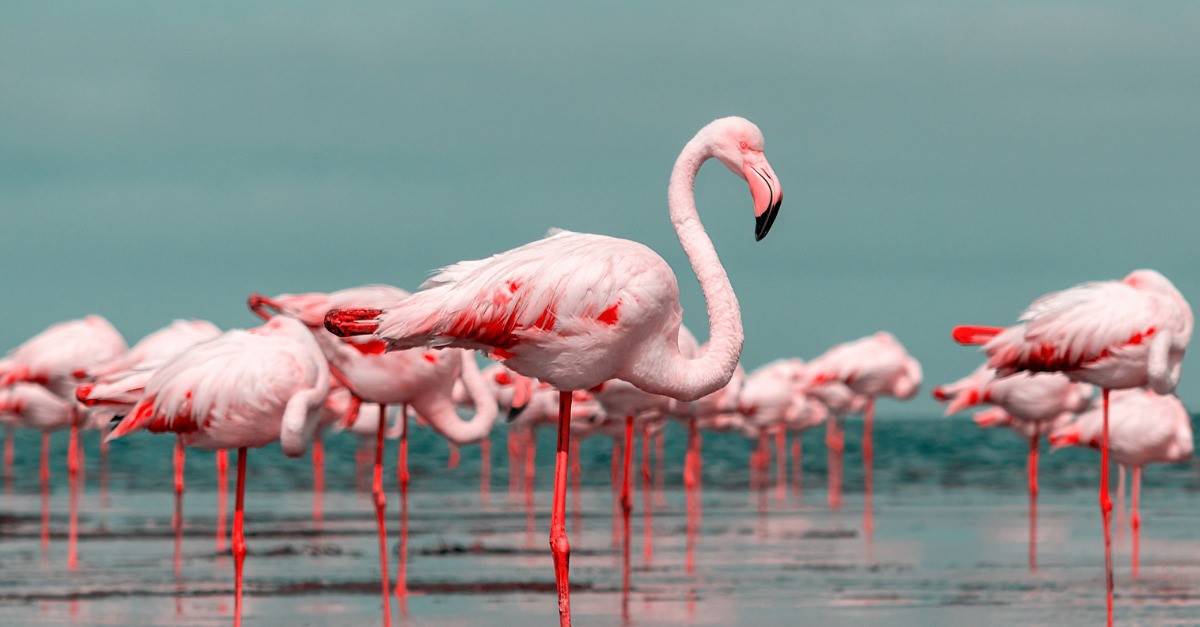When it comes to building a nest, birds use a wide variety of tactics and materials. Some birds, such as the puffin, burrow into the ground or take over abandoned rabbit warrens. Others, such as the bald eagle, build giant nests atop tall trees that grant them a view of the surrounding landscape. Some, such as the emperor penguin, do not build nests at all, and simply perch their eggs on their feet. Those birds that do choose to build nests do so with a variety of materials. Typically, they use plants and grasses that they can find in their local environment. Twigs, grass, moss, lichen, rocks, and even paper may find their way into a bird’s nest. Birds use these materials to cushion their eggs, and also to keep them safe from predators. That said, some birds choose to use one of nature’s greatest building materials. These are the birds that make mud nests or use mud in their nest’s construction.
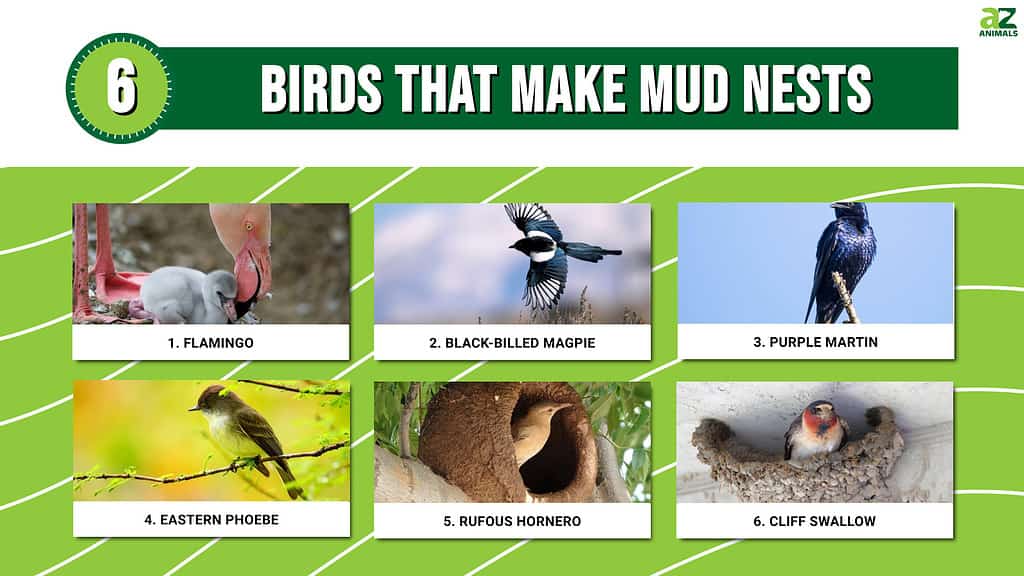
In this article, we’ll discover how several species of birds use mud to make their nests. From tiny songbirds to large wading birds, each of these species uses mud in a unique way. Hopefully, the next time you see one of these birds in the wild, you’ll see one of their mud nests. So, let’s get started and discuss 6 different birds that make mud nests.
#6: Cliff Swallow

Cliff swallows build their nests out of mud along the side of cliffs or buildings.
©iStock.com/Kuhu
Also known as the American cliff swallow, the cliff swallow is a songbird in the Hirundinidae family of swallows and martins. Cliff swallows breed throughout North America, and overwinter in South America. On average, they measure around 5 inches long and feature short bills and long, pointed wings. Their plumage appears dark brown, with a white forehead and belly, and red cheeks. The cliff swallow gets its name from its habit of building its nest along cliff faces or the sides of buildings. Cliff swallows nest in large colonies, which may contain thousands of individual birds. They build their gourd-shaped nests together and may stack their nests on top of each other. To build their nests, they carry mud and clay in their beaks back to their nesting site. Since the process takes so long, cliff swallow pairs may reuse the same nest year after year.
#5: Rufous Hornero
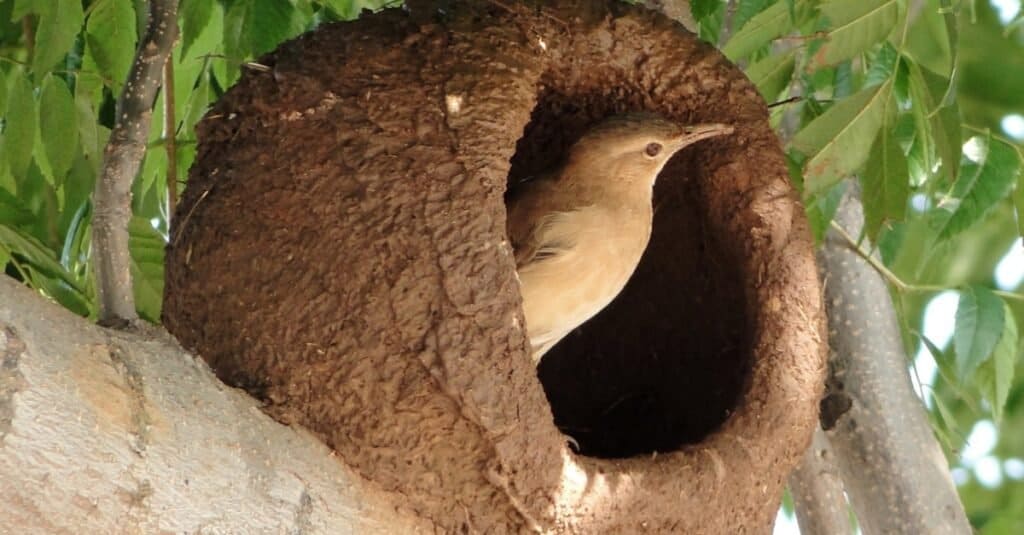
The rufous hornero builds an oven nest out of mud and clay.
©iStock.com/MarcosMartinezSanchez
The rufous hornero, or red ovenbird, is a member of the Furnadriidae family of ovenbirds. Endemic to South America, rufous horneros live in scrublands, fields, farmland, and grassy plains. Generally, they measure 7 to 8 inches long and sport a thin, curved bill which they use to forage for insects. The rufous hornero gets its name from its reddish-brown coloring and its habit of building an “oven” nest. In Spanish, horno means “oven,” which describes the shape of its nest. Like other ovenbirds, the rufous hornero builds a domed nest that looks suspiciously like a brick oven. During the breeding season, males and females work together to build a large nest made from clay. A nest usually takes only a few days to complete, but may take up to several months. Both parents take turns building the nest, incubating their eggs, and feeding their young.
#4: Eastern Phoebe
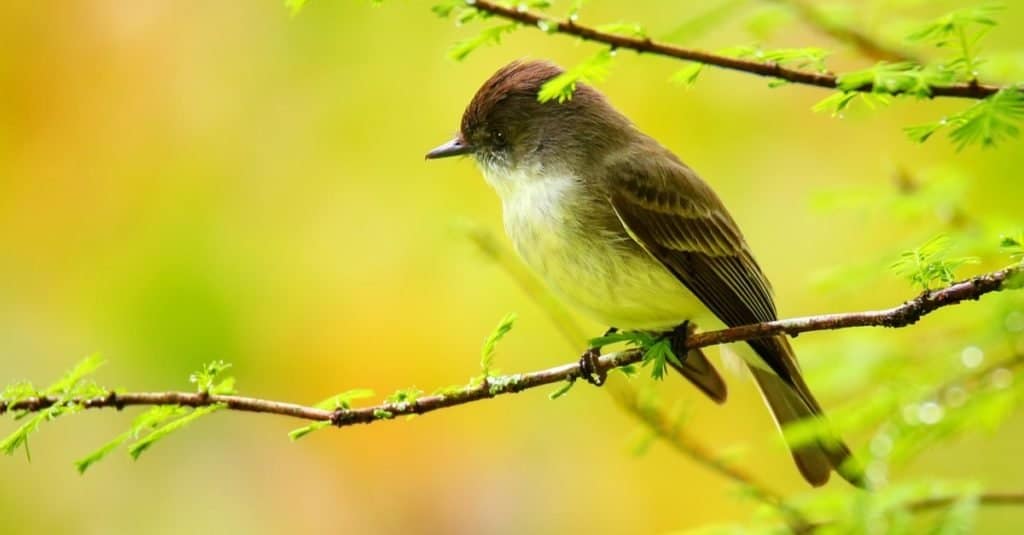
The eastern phoebe builds a cup nest out of mud and grass.
©Don Mammoser/Shutterstock.com
The eastern phoebe is a tiny songbird in the Tyrannidae family of tyrant flycatchers. It gets its name from Diana, the Roman moon goddess, who also goes by the name Phoebe. True to its name, the eastern phoebe ranges throughout the eastern half of North America. Typically, they measure around 5.5 to 6.7 inches long. Eastern phoebes sport a large head and feature a gray-brown back, whitish bellow, and throat. You can often find an eastern phoebe’s open cup nest on the sides of buildings, bridges, or other human structures. They build their nests out of mud and then line the inside with grass and moss. Both the male and female take turns to feed their hatchlings, which eat a diet of insects, fruits, and berries. However, eastern phoebes often get targeted by brown-headed cowbirds, which lay their eggs in other birds’ nests.
#3: Purple Martin
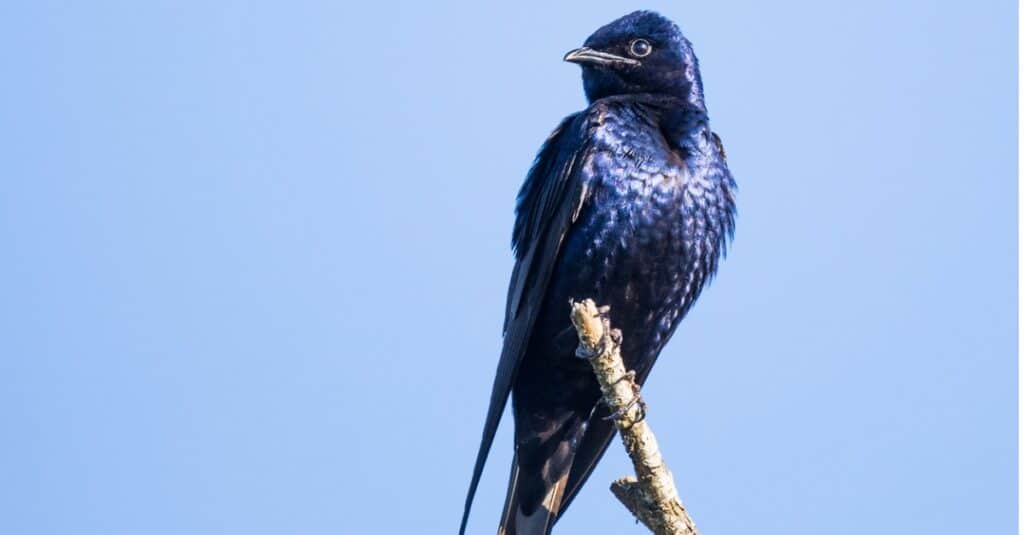
The purple martin builds its nest out of mud and twigs inside cavities.
©iStock.com/Jeff Huth
The purple martin is another member of the swallow and martin family Hirundinidae. The largest swallow in North America, the purple martin measures around 7.5 to 7.9 inches long. It gets its name from its distinctive color, which sets it apart from other swallows and martins. While technically more dark blue than purple, its iridescent feathers can appear purple in certain light. Known for their agility and acrobatic displays, purple martins can snatch insects such as mosquitoes right out of the air. During the breeding season, both males and females work together to choose a suitable nesting site. Purple martins build their nests inside cavities and will take advantage of artificial houses, gourds, or hollows in trees. They build their nests out of mud, twigs, and small rocks, as well as some seashells. They then line the inside with soft grasses topped with leaves to cushion the eggs.
#2: Black-billed Magpie
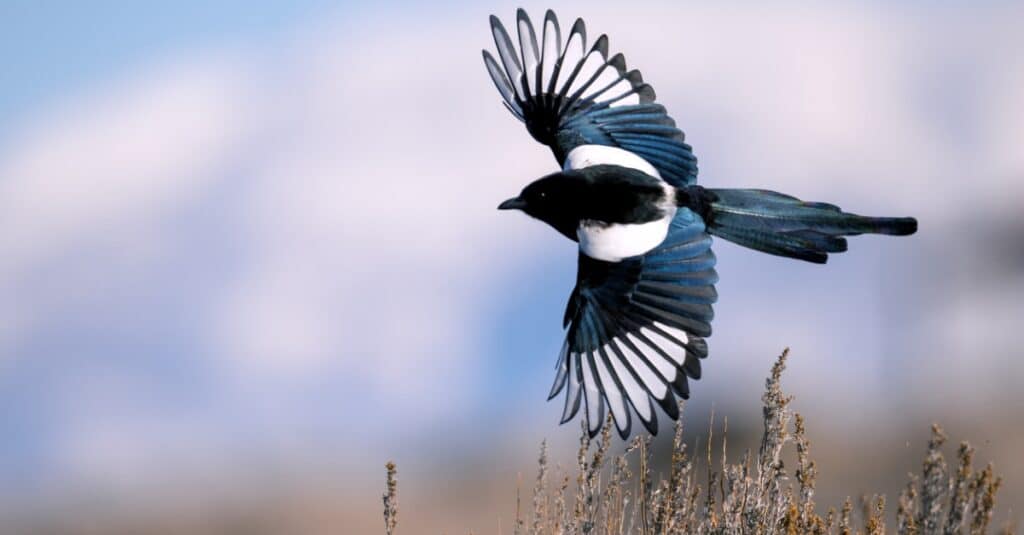
Black-billed magpies build domed nests on top of trees.
©iStock.com/kojihirano
Also known as the American magpie, the black-billed magpie belongs to the Corvidae family. Black-billed magpies range throughout the central and western United States, central and western Canada, and southern Alaska. On average, they measure 18 to 24 inches long, while their tail makes up almost half their total body length. Their thick plumage appears black and white, and also contains spots of iridescent blue on the tail and wings. They build their nests in trees, typically in open grasslands or urban areas. Like other corvids, they roost communally, particularly in winter, and will often mate for life. Black-billed magpies build domed nests on top of trees. The bottom half of the nest is made from mud, twigs, grasses, branches, leaves, and other plant matter. Meanwhile, the top half is formed by a loose amalgamation of twigs. In total, a nest may take up to 50 days to complete.
#1: Flamingo
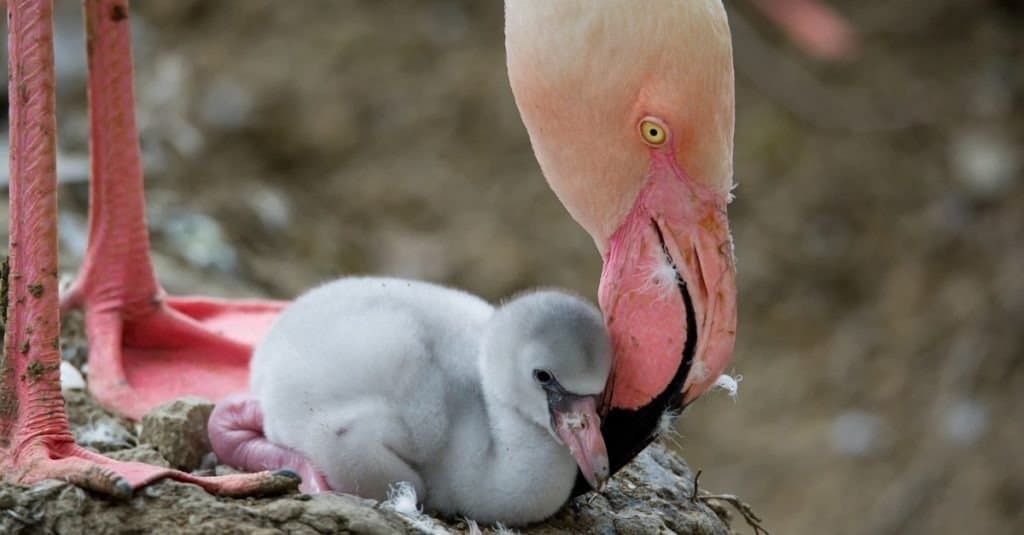
Flamingos build mound nests out of mud that measure nearly 1 foot high.
©Ondrej Chvatal/Shutterstock.com
The flamingo is a wading bird in the family Phoenicopteriformes, of which it is the only extant member. Flamingos live throughout the world, and you can find them in the Americas, Caribbean, Africa, Asia, and Europe. They can range from 2.6 to 4.7 feet long, and weigh anywhere from 5.5 to 7.7 pounds. In Spanish, the term flamingo translates to “flame-colored,” which alludes to their unique coloring. They range from light pink to red and get their coloring from the beta-carotene and bacteria in their diet. Both females and males work to build their nests, which they will aggressively defend. Their nests are built atop mudflats and constructed into the shape of mounds. Made of mud, stones, straw, and feathers, these mounds can measure up to 12 inches tall. At the top of the mound lies a small depression, where the female will lay a single egg.
Summary of 6 Birds That Make Mud Nests
| Number | Bird |
|---|---|
| 1 | Flamingo |
| 2 | Black-billed Magpie |
| 3 | Purple Martin |
| 4 | Eastern Phoebe |
| 5 | Rufous Hornero |
| 6 | Cliff Swallow |
Thank you for reading! Have some feedback for us? Contact the AZ Animals editorial team.

